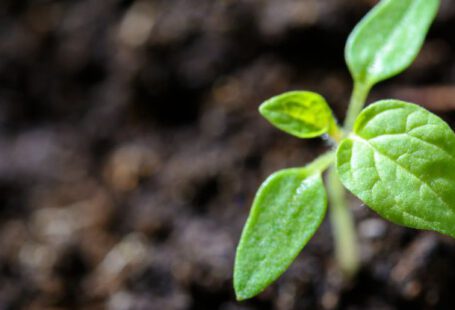Composting is a simple, eco-friendly way to enrich your garden soil and reduce waste. Creating a composting system for your garden doesn’t have to be complicated or expensive. With a few basic tools and some patience, you can turn your kitchen scraps and yard waste into nutrient-rich soil amendment for your plants. Here’s how to get started:
Choosing the Right Location
Selecting the right location for your composting system is crucial for its success. Choose a spot in your garden that is well-drained and receives partial sunlight. Avoid placing your compost bin directly on grass or soil to prevent pests from accessing it easily. Additionally, ensure that the location is easily accessible for adding materials and turning the compost.
Picking the Right Compost Bin
There are various types of compost bins available, from simple DIY setups to more elaborate commercial options. Consider the amount of waste your household generates and the space available in your garden when choosing a compost bin. Tumbling composters are great for small gardens or urban settings, while stationary bins work well for larger yards. Whichever type you choose, make sure it has good ventilation and drainage to promote the decomposition process.
Adding the Right Ingredients
Successful composting requires a good mix of green (nitrogen-rich) and brown (carbon-rich) materials. Green materials include fruit and vegetable scraps, coffee grounds, and grass clippings, while brown materials consist of dry leaves, straw, and shredded paper. Aim for a ratio of roughly 2 parts brown materials to 1 part green materials to create a balanced compost pile. Avoid adding meat, dairy, or oily foods, as they can attract pests and slow down the composting process.
Turning and Aerating the Compost
Turning your compost pile regularly is essential to aerate it and speed up the decomposition process. Use a pitchfork or compost aerator to mix the materials thoroughly and introduce oxygen into the pile. Aim to turn your compost pile every 1-2 weeks to ensure even decomposition and prevent it from becoming smelly or compacted.
Monitoring Moisture Levels
Proper moisture levels are crucial for successful composting. Your compost pile should be as damp as a wrung-out sponge, with moisture evenly distributed throughout. If your compost pile is too dry, add water using a watering can or hose. On the other hand, if it’s too wet, mix in additional brown materials to absorb excess moisture. Regularly check the moisture levels of your compost pile and adjust as needed.
Harvesting Your Compost
After several weeks to several months, depending on the size of your compost pile and the materials used, your compost should be ready to use in your garden. Finished compost will be dark, crumbly, and earthy-smelling, with no visible traces of the original materials. Use a screen or sieve to sift out any large chunks before adding the compost to your garden beds. Store any excess compost in a covered bin or pile to use throughout the growing season.
Embracing the Composting Lifestyle
Composting is not just a way to reduce waste and improve your garden soil—it’s a mindset shift towards sustainability and environmental stewardship. By creating a composting system for your garden, you’re taking a small but impactful step towards a greener lifestyle. Share your knowledge and enthusiasm for composting with friends and neighbors to inspire others to join the composting movement.
Incorporating composting into your gardening routine can be a rewarding and fulfilling experience. By following these simple steps and tips, you can create a thriving composting system for your garden that will benefit both your plants and the planet. Start small, be patient, and enjoy the process of turning waste into valuable organic matter for your garden. Happy composting!





